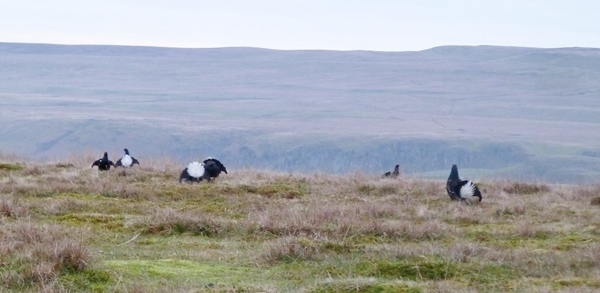April and May sees members of the upland team surveying black grouse males at display sites known as ‘leks’. Black grouse do not form pair bonds like red grouse or grey partridge but instead, gather at communal leks where they display to attract females. The word ‘lek’ comes from the norse word for ‘play’ however, for black grouse this is a more serious business with males displaying and competing to take central territories on the arena. These are held by the dominant males who secure the majority of matings.

Males gather at leks at dawn throughout the year, but peak attendance is in April and May when females attend. Males display by parading their white tail feathers and arched lyre feathers, whilst making a bubbling call and a guttural hiss. On clear, still mornings lekking males can be heard displaying from up to a couple of kilometres away.

We have been counting males at leks annually since 1987 as it is a practical and consistent way to monitor numbers and trends in black grouse. Known leks and areas of suitable habitat are visited between dawn and 7am, and from good vantage points we listen for characteristic bubbling and hissing calls whilst searching the area with binoculars and telescopes for trademark ‘white bottoms’. Sites are visited twice, once in April and again in late May with the total numbers of males and their location recorded.

We also count the numbers of females present, but their attendance is much less consistent. Numbers of females present, are quantified later in the summer when we search suitable breeding habitats with pointing dogs to assess breeding productivity and densities.